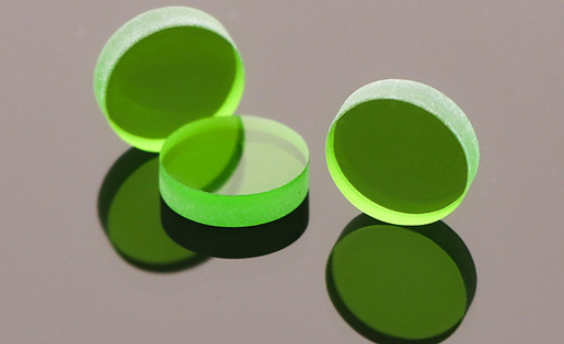Optical Filters Selection Guide: Types, Features, Applications
Aug. 22, 2024
Optical filters are indispensable components in optical systems, serving to selectively transmit or block certain wavelengths of light. Whether you're a photographer looking to enhance your images or a scientist working on a complex experiment, understanding optical filters is crucial.
What are Optical Filters?
Optical filters are devices that modify light by blocking or transmitting specific wavelengths. They are made from materials like glass or plastic, coated with special substances to achieve the desired filtering effect.
How Do Optical Filters Work?
Optical filters work by exploiting the principles of reflection, absorption, and transmission. Some filters absorb unwanted wavelengths, while others reflect them. The choice of filter depends on the application and the specific wavelengths that need to be manipulated.
Types of Optical Filters
Absorptive Filters
As their name implies, absorptive filters transmit desired wavelengths by absorbing unwanted ones. These filters typically consist of dyed glass or pigmented gelatin resins, and are relatively inexpensive to manufacture and purchase. The ability of absorptive filters to attenuate light is based on the filter's physical thickness and the amount of dye or pigmentation present.
Absorptive filters are relatively less precise when compared with dichroic types. For this reason, they are often used in applications requiring the transmission of broad band of wavelengths, as well as applications involving the blockage of short wavelengths and transmission of longer ones.
Absorption filters have several inherent advantages and disadvantages. Their main strong points are their low cost, stability when used in a wide variety of environments, and insensitivity to illumination angle. Disadvantages include poor long-term temperature resistance and inadequate performance when used in precision applications. Absorptive filters, especially gelatin types, are suitable for a wide range of applications, including optical microscopy.
Dichroic Filters
Dichroic filters, also known as interference filters, filter light by rejecting all undesired wavelengths, allowing selected wavelengths to pass through. The term "dichroic" is derived from the Greek word díchros, meaning "of two colors." These filters are constructed using thin film technology by depositing several layers of dielectric film on one side of an optically flat piece of transparent glass. When light strikes the coated side of the filter, the various layers of film magnify and transmit the desired wavelengths while reflecting and reducing the undesired ones.
Neutral Density Filters
Neutral density filters, also known as ND filters or grey filters, reduce light transmission evenly across a portion of the spectrum. These filters are slightly sensitive to angles, but less so than interference filters. ND filter technology is common in consumer applications, particularly photography.
Shortpass and Longpass Filters
Longpass and shortpass filters are named for the wavelengths they transmit and attenuate. Longpass filters transmit (or "pass") longer wavelengths and block shorter ones, while shortpass filters block longer wavelengths and pass shorter ones. Both are frequently used in fluorescence microscopy. Long- and shortpass filters with very sharp transmission slopes are sometimes called edge filters.

Key Features to Consider When Selecting Optical Filters
Wavelength Range
The wavelength range is the most critical feature to consider. Ensure the filter you choose can handle the specific wavelengths required for your application.
Optical Density
Optical density measures how much light is blocked by the filter. A higher optical density means more light is blocked, which is crucial in applications like laser protection.
Transmission Efficiency
Transmission efficiency refers to the percentage of light that passes through the filter. High transmission efficiency is essential in applications where light loss needs to be minimized.
Durability
Durability is a key consideration, especially if the filter will be used in harsh environments or exposed to intense light sources.
Applications of Optical Filters
Photography
In photography, optical filters are used to enhance colors, reduce reflections, and control exposure. ND filters, polarizing filters, and color filters are among the most commonly used.
Medical Imaging
Optical filters play a crucial role in medical imaging, particularly in fluorescence microscopy and endoscopy, where they help isolate specific wavelengths for clearer images.
Laser Systems
In laser systems, optical filters are used to protect sensors and other components from damage by blocking harmful wavelengths while allowing the desired laser light to pass through.
Astronomy
Astronomers use optical filters to observe specific wavelengths of light from stars and other celestial bodies. These filters help in analyzing the composition and movement of celestial objects.
Spectroscopy
In spectroscopy, optical filters are essential for isolating specific wavelengths of light, enabling the precise measurement of different substances' spectral properties.
Conclusion
Optical filters are vital tools in both everyday and specialized optical applications. Whether you're enhancing your photography, conducting scientific research, or working in medical imaging, choosing the right optical filter is crucial. With a solid understanding of the different types, features, and applications, you can make an informed decision that best meets your needs. For more information on selecting the right optical filter or to explore our range of products, feel free to contact us. We are a trusted supplier of high-quality optical filters for various industries.
FAQs
1. What is the difference between absorptive and dichroic filters?
Absorptive filters absorb unwanted wavelengths, while dichroic filters reflect them using thin-film coatings.
2. How do I clean my optical filters?
Use specialized cleaning solutions and lint-free wipes, and always handle filters with gloves to avoid scratches.
3. Can optical filters be used in harsh environments?
Yes, but ensure the filter is durable enough for the specific environmental conditions.
4. What should I consider when choosing a filter for photography?
Consider the type of effect you want (e.g., reducing glare, enhancing colors) and the specific conditions you'll be shooting in.
5. Where can I find a reliable supplier of optical filters?
You can find reliable suppliers online or through specialized optical equipment providers. Feel free to contact us for high-quality options.





















